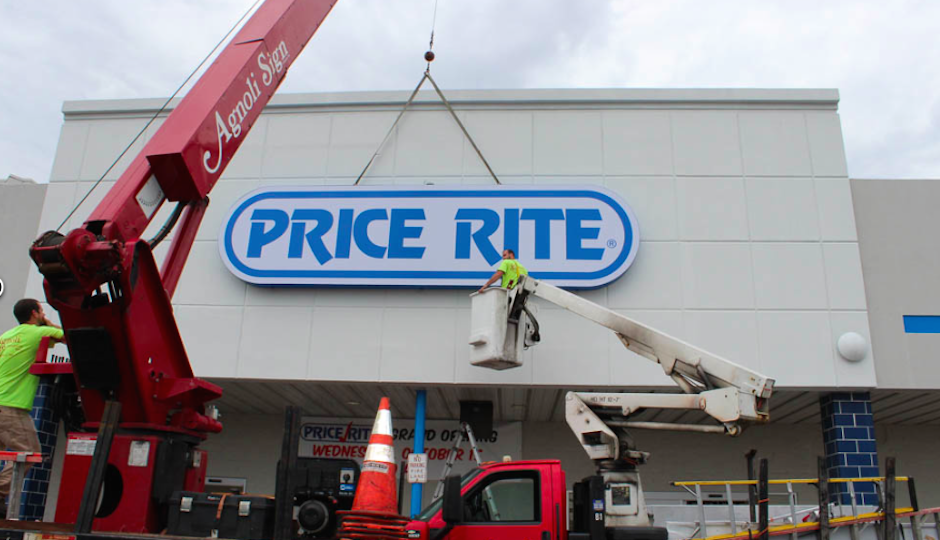Is Camden on the Cusp of Revival?
Chris Goodman hasn’t been in Camden very long, but already he’s seen one significant change.
“The first year I was here, there was a big memorial on the lawn of City Hall — a cross for every person murdered,” said Goodman, an assistant professor in the Department of Public Policy & Administration at Rutgers-Camden; he arrived on campus two-and-a-half years ago. “It was a big deal.
And now? “That’s not there now. There’s a pop-up park.”
Camden has long been known for two things: Violence and poverty. It’s a regular stop on the “ruin porn” touring circuit for journalists chronicling America’s urban decay — just last spring Rolling Stone labeled the city “America’s Most Desperate Town” under the headline: “Apocalypse, New Jersey.”
But maybe things are turning around.
Violence is down. The bond rating is up. A supermarket just opened. The 76ers are opening a practice facility. The city is rebuilding its governing capacity after an embarrassing state takeover in 2002. There are dozens of small metrics, taken together, that suggest this small city across the Delaware River from Philadelphia may be gathering the strength to escape its reputation as one of America’s worst places.
“Before I took office in 2010, Camden was literally described as a car with no engine,” Mayor Dana Redd said during a recent interview in her office. Now, though, she thinks she has reason to think big: “Ultimately and over time, I expect to see our unemployment rate come down, I expect to see more citizens working, and to attract a middle-class base back to Camden.” (Read Philly Mag’s extended interview with Redd.)
Can it happen? There are still big challenges. Here are four reasons, however, to think that Camden, at long last, is finally on the rise.
Violence is waning
Earlier this month, ShotSpotter — which operates gunfire-detecting microphones throughout Camden, announced that the first half of 2014 saw a 50 percent reduction in the amount of gunfire it had detected in the city. That followed a New York Times report detailing a slew of statistics suggesting the city is safer: Shootings were down 43 percent, violent crime down 22 percent, and the response time by police to emergency calls down to 4.4 minutes — from more than an hour previously. Not too long ago, the city went 40 days without a homicide.
Sister Helen Cole has been ministering to victims of the city’s violence for 20 years. She says in recent months she’s seen families on the streets around her North Camden residence, instead of the usual drug dealers.
“I absolutely see the difference, both in my practice and in my neighborhood in North Camden,” she said. “ We see less criminal activity — I’m talking primarily about drug dealing and drug buying. Drug dealers aren’t present anymore — they’ve gone underground.
She added: “The basic air doesn’t seem as hostile.”
(Listen to Sister Helen Cole talk about Camden’s history of violence)
[soundcloud url=”https://api.soundcloud.com/tracks/170406367″ params=”color=ff5500&auto_play=false&hide_related=false&show_comments=true&show_user=true&show_reposts=false” width=”100%” height=”166″ iframe=”true” /]
Crime-fighting in Camden has undergone a radical reinvention the last few years. The unionized city police force was disbanded two years ago, and the Camden County Police Department expanded to include city streets in its coverage area. There are many more officers on the street — more than 400, compared to 250 before — working at a cheaper rate than their predecessors.
But union-busting on its own didn’t produce a drop in crime. The remaining force has given the “community policing” idea a fresh try — cops get out of their cars and walk the beats, talking to the people they see and developing relationships in the community — and made more extensive use of technology. That’s produced a mixed reaction: The Atlantic recently labeled Camden a “surveillance city.”
Then again, that moniker beats the “Murder Capital of America” tag that has plagued the city so long.
“Well you know, I wouldn’t label Camden as a ‘surveillance city,’ But what I would say is that we’re utilizing technology as a force multiplier,” Redd said. “To the extent that it helps our police efforts here and our crime fighting efforts, it is welcomed, I can tell you, by our residents, and we’re looking to scale up more as funding becomes available.”
The City Is Attacking Blight

Camden Mayor Dana Redd in her office. The city is showing signs of recovery, at long last.
The city of Camden is about 70,000 people now — more than 50,000 residents short of its population high of 124,000 people in 1950. That means there are a lot of empty buildings, falling apart and festering, that add to the city’s overall look of hopeless poverty — estimates range from 3,000 to 9,000 abandoned buildings in Camden.
Now, though, the city is ready to attack the problem. It just took out an $8 million bond to demolish 600 abandoned and vacant structures across the city.
“I think that the number of 9,000 properties needing to be taken down is way, way too high,” Redd said. “From our estimate, we’re more like under 1,000 that need to be demolished as ‘hazardous structures’ — and there’s a definition that our code and enforcement official will apply to whether or not a property is deemed hazardous, unsafe, and an imminent threat to the public safety — those properties get taken down.”
Obtaining the bond was itself an impressive sign of the city’s recovery. After the state restored local control in 2010, Redd rebuilt the city’s finance department under the leadership of Glynn Jones. The city’s finances were certified as accurate for three years in a row — ”Something that has not been celebrated in Camden,” Redd said — which resulted in the city’s best bond rating in 15 years. That in turn allowed officials to borrow the money they need to address blight on a widespread scale.
Redd isn’t worried that widespread demolition will send the message that Camden is still winding down, as opposed to ready to grow. Blighted buildings, she said, actually encourage nearby homeowners to flee the city as well. “They’re just sick of looking at properties that are falling down and nothing being done,” she said.
Demolition will help stop the bleeding. “We couldn’t do anything with it because we weren’t in the financial position to address it” before, she said. “But now we are.”
Outsiders Are Making Investments
For a while, it seemed like the main signs of economic life in Camden might be along Federal Street, where there are dozens of small businesses owned and operated by the city’s sizable immigrant community.
“I think it’s the only thing keeping Camden alive these last 10 years,” said Adam Solow, a Philadelphia immigration attorney who operates a Saturday morning law clinic here.
Last week, though, saw the opening of a PriceRite grocery store in Camden — a relief to officials who had complained the city had become a “food desert” since Pathmark stores exited South Jersey a year ago. The new store will employ more than 100 people, most of them local hires.
“I’ve been looking for a location in Camden for over 10 years, probably. When the Pathmark closed, we pretty much just jumped right on it,” said Jason Ravitz, vice president of retail operations for Ravitz Family Markets, which owns the new store.

Workers lower the PriceRite sign into place ahead of this week’s store opening in Camden.
Elsewhere, Newark-based M&M Development is in the midst of building and renovating 30 homes around the city for new occupants, with those house prices ranging from $162,000 to $229,000.
“Certainly if you’re scared of poverty, Camden is a good place to be scared of. But if you go to Camden, you’ll discover that it’s no different from any other city,” said Maria E. Yglesias, one of M&M’s co-founders. “It’s a city that can come back if there’s a will to make it come back.”
(Listen to Maria E. Yglesias talk about investing in Camden.)
[soundcloud url=”https://api.soundcloud.com/tracks/170503751″ params=”color=ff5500&auto_play=false&hide_related=false&show_comments=true&show_user=true&show_reposts=false” width=”100%” height=”166″ iframe=”true” /]
But signs of economic progress are often augmented by the state. PriceRite is benefitting from a rental rebate program targeted at the city; the 76ers are coming because of an $82 million tax break — and Holtec International, a nuclear equipment manufacturer, is getting $260 million in state aid to locate in the city. Last week, news emerged that defense contractor Lockheed Martin is seeking $100 million in incentives to build a facility here.
That worries observers like Stephen Danley, an assistant professor of public policy and administration at Rutgers-Camden.
“Because the city doesn’t have money to run itself, it’s at the beck and call of what the governor wants to do,” Danley said. “As long as Camden is held at the beck and call of state politics, it’s going to be difficult to have a full recovery.”
Indeed, Gov. Chris Christie has made regular trips to Camden in recent months to tout progress there. Danley worries the city is becoming a prop in Christie’s nascent 2016 presidential campaign — and wonders what happens when the campaign is over.
“Can a city survive that’s being used for state political reasons?” he said. “Its reforms are more about politics and about ideology than what’s best for Camden.”
There Seems to Be Hope
This is Camden, so expressions of hope tend to be of the “knock on wood” variety. Still, it’s not hard to hear such expressions when talking to people in the community.
“There’s great people here,” said Solow, the immigration attorney. “Great people who live and work here. You should know there are good people here and you shouldn’t just throw this place away.”
Yglesias, the developer, offers a blunt bottom-line analysis: “I believe in Camden. Camden is happening,” she said.
However: “It’s not going to be overnight. It’s going to be a process … It’s going to be progressive. It’s going to be one neighborhood at a time.”
Redd knows that more has to be done — particularly in the area of violence reduction. Camden is safer than was, but it must be made safer yet.
“I[‘ll] know when I’ve succeeded — and when I say I, I mean ‘we’ — when we see Camden really come out of the top five of the most dangerous cities in America. Our people are not proud of that title — in fact, we mentioned it yesterday and it got a lot of ‘boos,’ so they want to get out of that top five.”
Sister Helen Cole, at least, hopes and believes that can happen.
“I have eternal hope for the the city of Camden. There are so many good people here, good hard-working people,” she said. “They want good things for their children, and they want good things for themselves. So I’m happy there’s finally some good news coming out of Camden.”
Follow @JoelMMathis on Twitter


